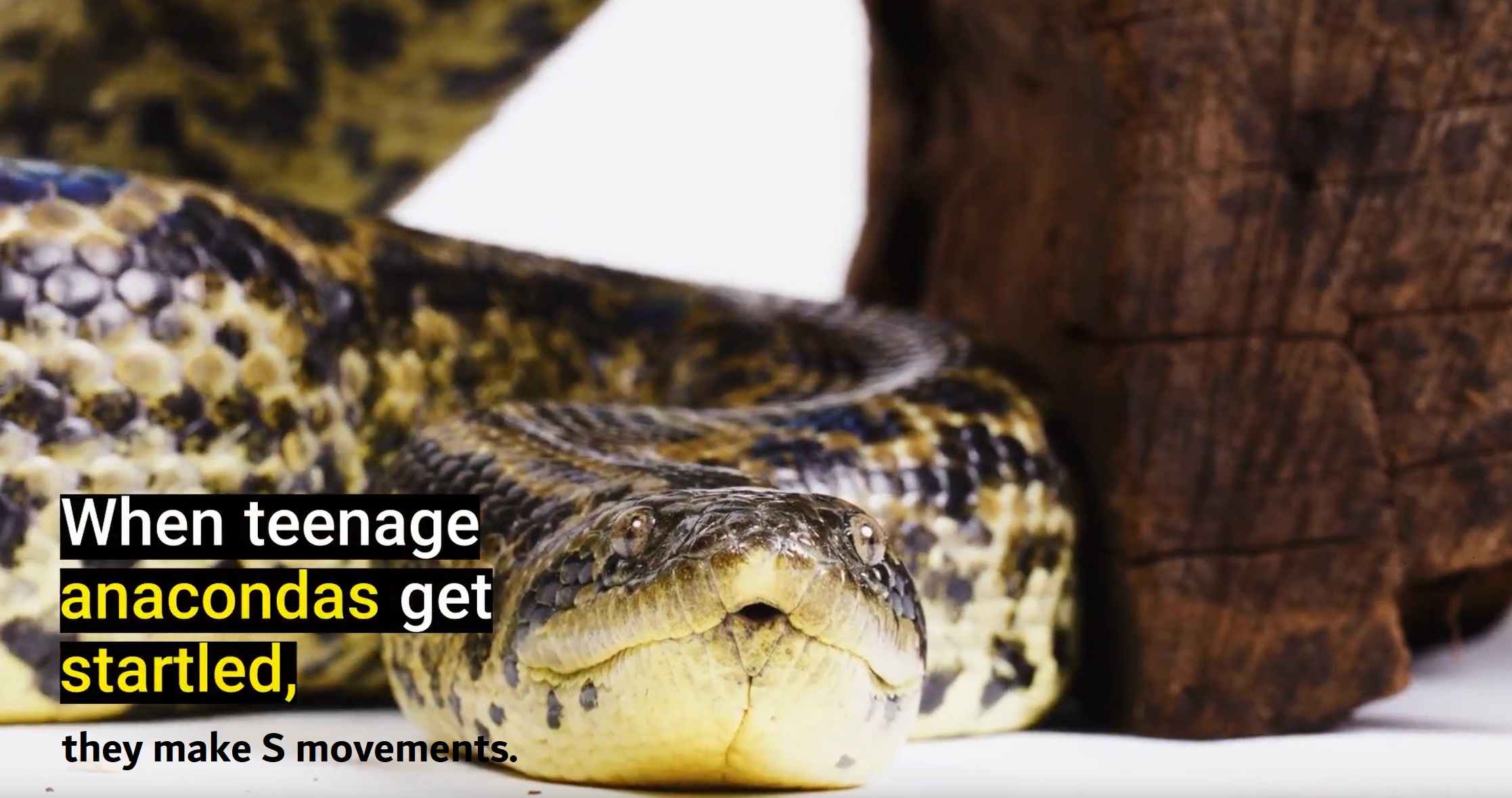Slithering Snakes: The Science Behind the Motion of a Young Anaconda
Research offers insight into how snakes move, potentially leading to robotics applications
By Anne Manning and Carole Mezian
June 30, 2025

Key Takeaways
- A mathematical framework shows that juvenile anacondas, as opposed to babies and adults, exist in a "goldilocks zone" of relative weight and strength to allow them to execute the movement.
- The researchers think sidewinding evolved from the S-start. During sidewinding, the snake lifts part of its body off the surface into an S curve, a propagated localized bent and twisted region along its body, leading to net motion.
- Body weight and muscular torque shows that relatively light juveniles are capable of S-starts, whereas newborns or heavy adults are not.
The motion of snakes has long fascinated humans: they undulate, they sidewind, they crawl, they even fly.
Together with herpetologists, researchers in the Harvard John A. Paulson School of Engineering and Applied Sciences (SEAS) have discovered and quantified a new type of locomotion in juvenile anacondas (Eunectes notaeus).
A team led by SEAS professor L. Mahadevan, the Lola England de Valpine Professor of Applied Mathematics, Physics and Organismic and Evolutionary Biology in SEAS and the Faculty of Arts and Sciences, is the first to describe the S-start movement using a mathematical model that quantifies exactly how the snake executes it. The research is published in Nature Physics. ![]()
Together with herpetologists, researchers in the Harvard John A. Paulson School of Engineering and Applied Sciences (SEAS) have discovered and quantified a new type of locomotion in juvenile anacondas.
"This S-start movement is the serpentine analog of the moonwalk—a fast, graceful glide that seems to defy common sense," Mahadevan said. "We used observations to create a mathematical framework, in order to understand under what conditions movements like this are possible, and why they are lost as the snake gets older, heavier, and relatively less strong."
In their computational analysis, backed up by experiment and observation, the Harvard researchers found that the S-start is present in a "goldilocks" zone of an anaconda's weight and relative strength. Adult anaconda snakes are heavy, large, and better known for their slow, lumbering frictional gait, and is too heavy to execute the movement. Lifting its body as it moves allows the snake to minimize frictional losses, but comes with a cost—the snake has to overcome gravity and elevate within the S-start to move. Thicker snakes or those with relatively less musculature/more bone are unable to do so. Researchers discovered that juvenile anacondas are much more spry—capable of a quick, one-off, skating movement, often used defensively to escape a threatening situation, which researchers dubbed the "S-start" due to the shape the snake makes with its body. These slender snakes or those with relatively stronger musculature can achieve movement with the S-start shape. The newborn anaconda snakes are very small, but too strong, so they are unstable and flail upward or unravel in their movement.
In describing the S-start, Mahadevan's team helped correct misconceptions about the better-known sidewinding—the continuous, sideways motion snakes use to slide down sandy hills. In their analysis they found that the S-starts are "non-planar," as in, some segments of the snake are off the ground, almost as if the snake were walking. "We realized that the sidewinding motion is very similar to this S-motion, in that it consists of S-starts that are repeated again and again," Mahadevan said.
"Perhaps, from an evolutionary point of view, this transient movement was taken up and then repeated, and this became the origin of sidewinding," Mahadevan said. Overall, the findings seed new insights into how the S-start reflex works in snakes and could serve to inspire new robotic systems or other innovations.
Study co-author and Missouri herpetologist Bruce Young first noticed several years ago that young anacondas, when gently prodded, displayed what he could only describe as a startle reflex. "This behavior involved not only forming the body into a very characteristic shape, and moving using a gait previously undescribed from snakes, but also moving remarkably fast," Young said, noting that anacondas are known for their mass and strength, but not for their speed. "It was clear to me that this was something new, involving different biophysics, than what had been described in snakes."
Young had at this point never met Mahadevan but was a "big fan" of his work — "He has such a mastery of describing and modeling shape and movement" — that Young pitched to Mahadevan a collaborative analysis. The result was the Nature Physics study, co-authored by former Harvard graduate student Nicholas Young and Indian Institute of Technology Bombay researcher Raghu Chelakkot, who developed the computational model to quantify the movement, along with Mattia Gazzola from the University of Illinois.

Authorship, funding, disclosures, ownership
This research was supported by the National Science Foundation grants: BioMatter Division of Material Research 1922321, Harvard University Materials Research Science and Engineering Center grant DMR-2011754, and Emerging Frontiers of Multidisciplinary Activities 1830901.
